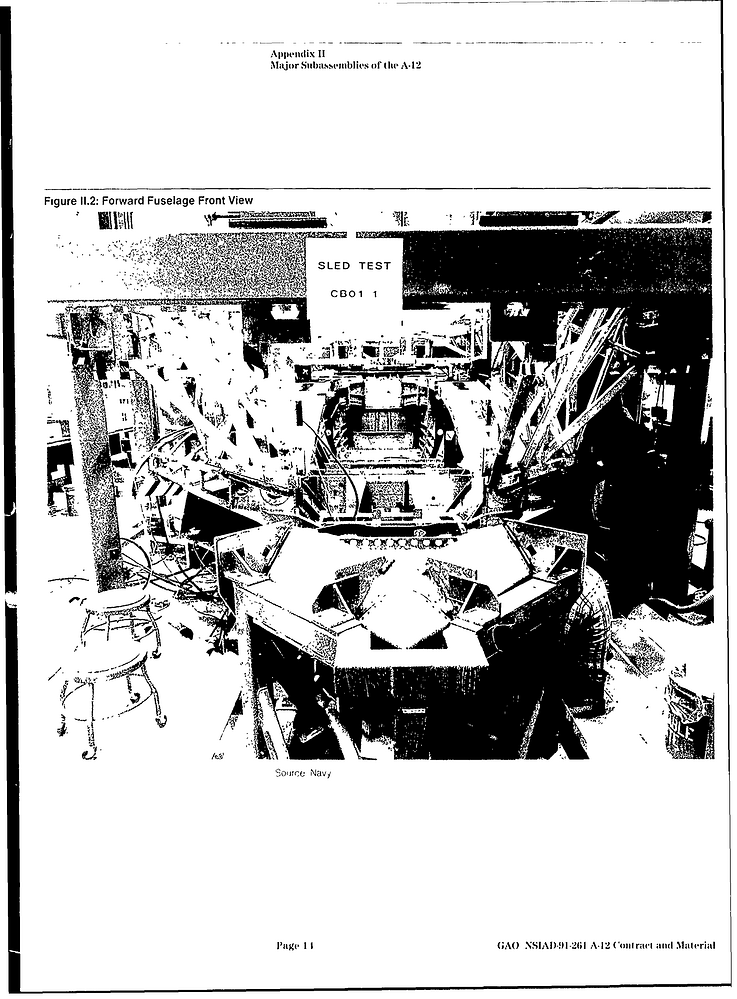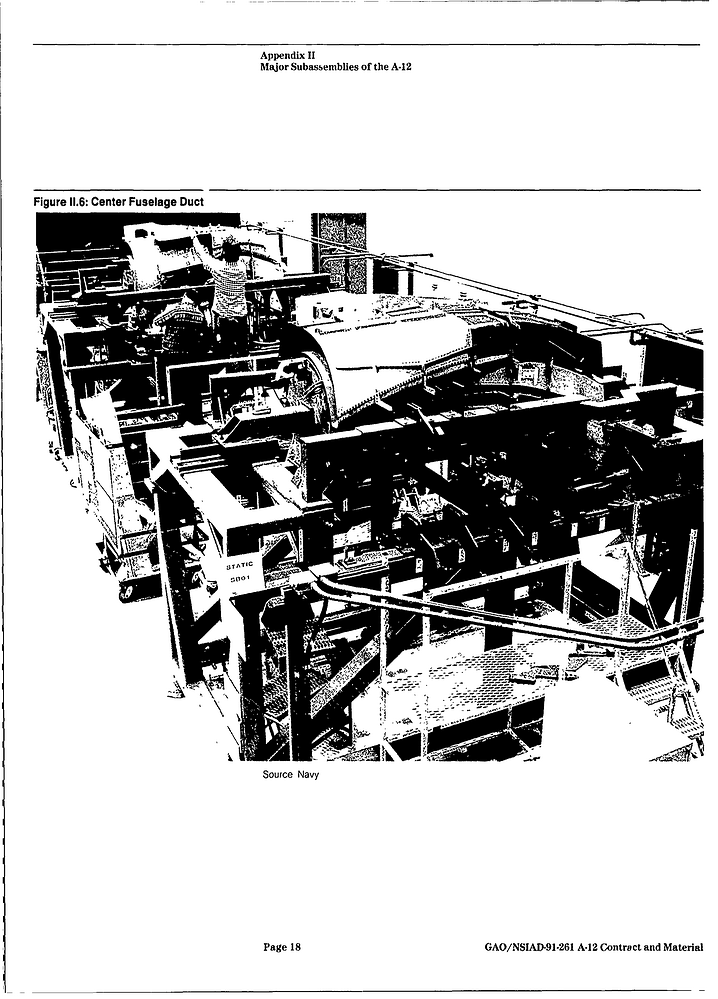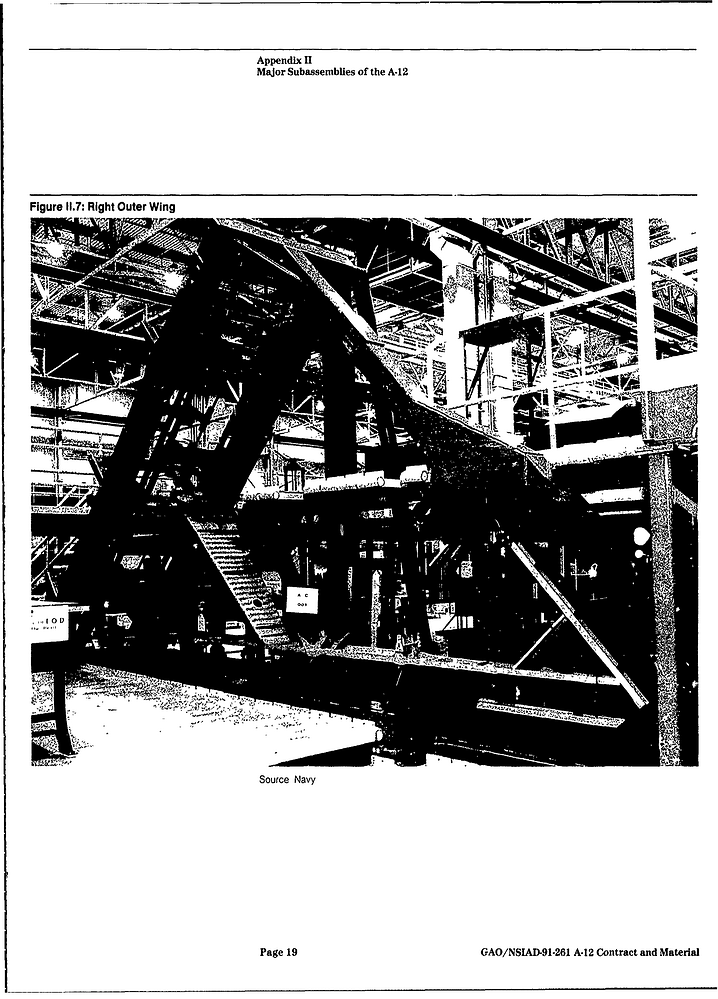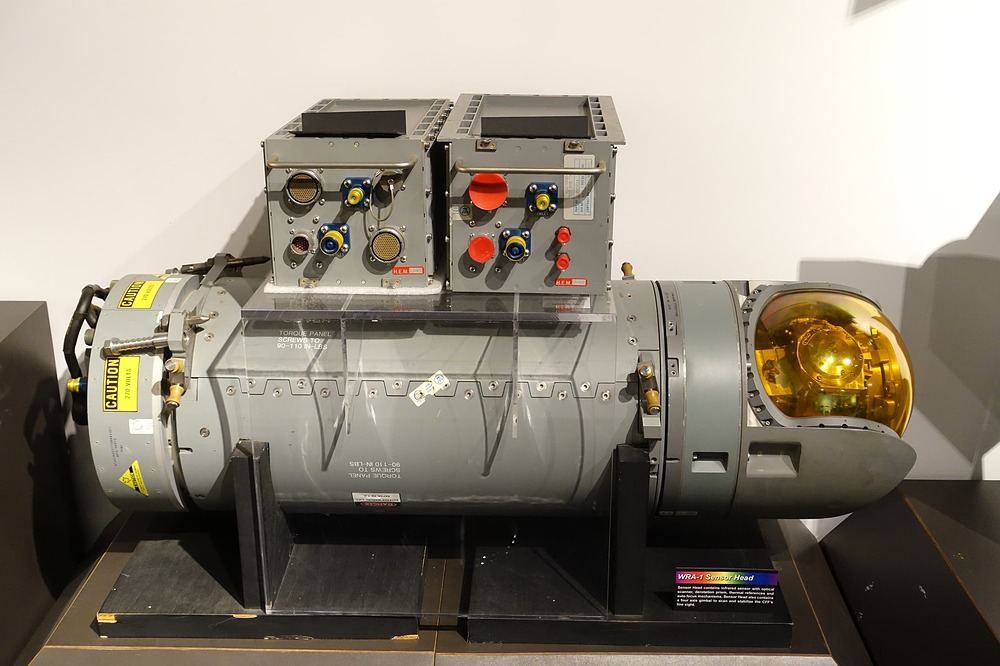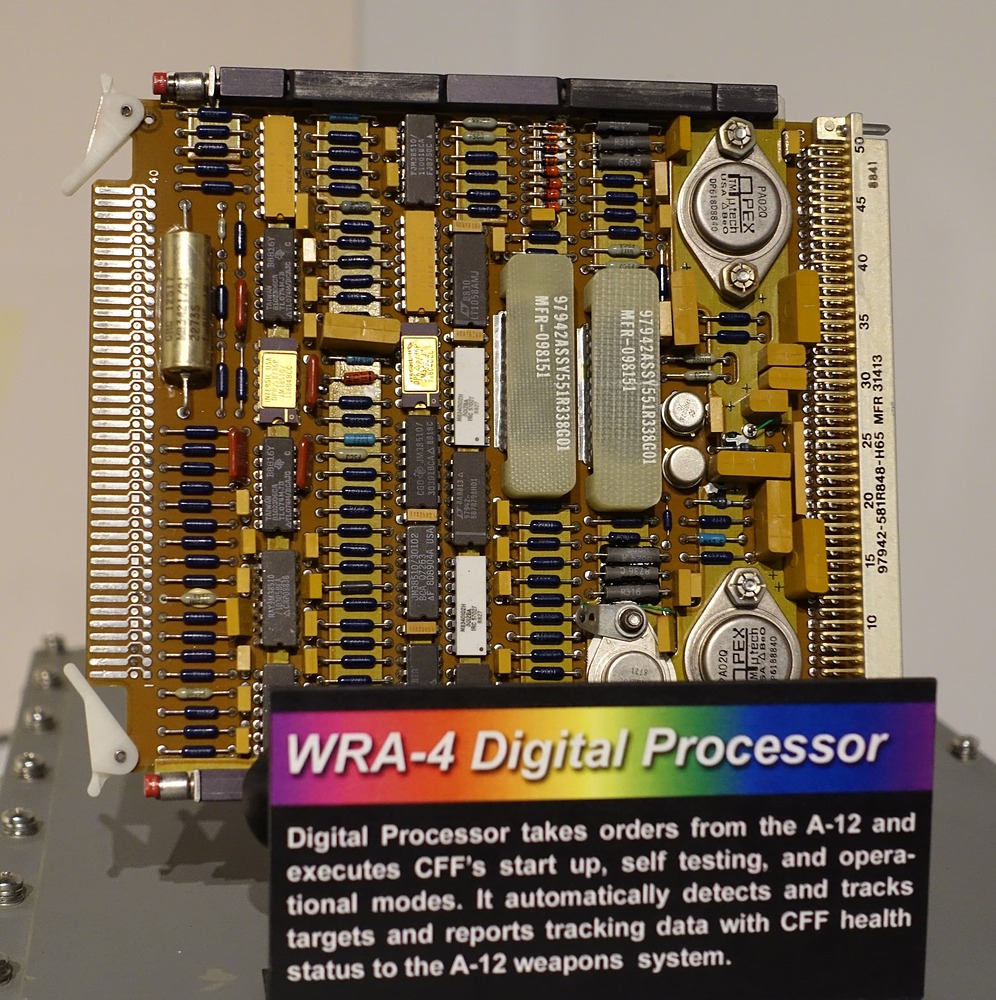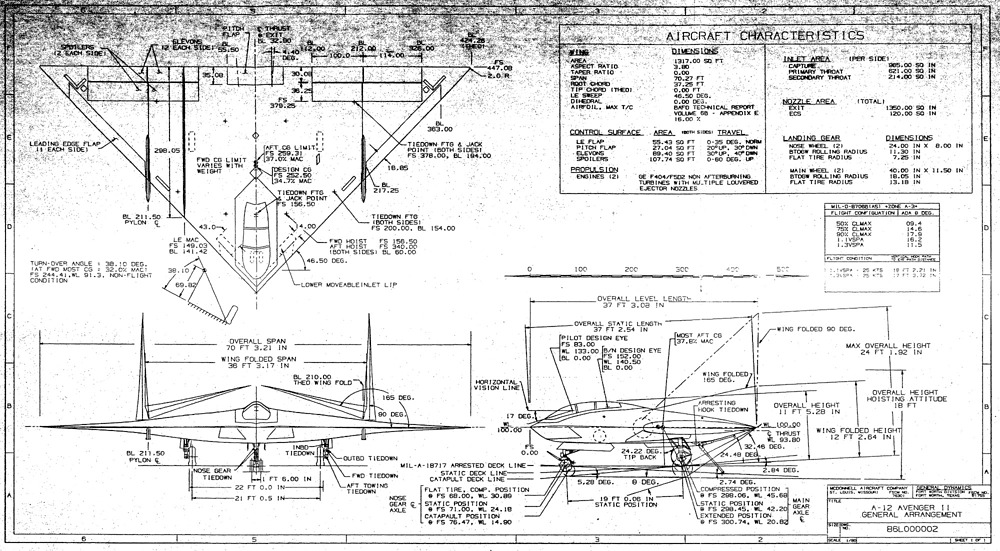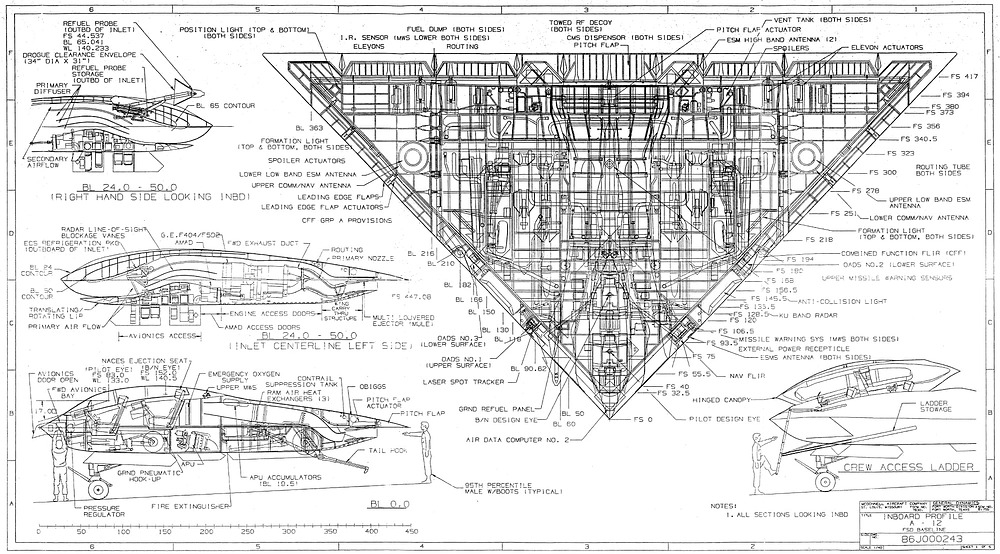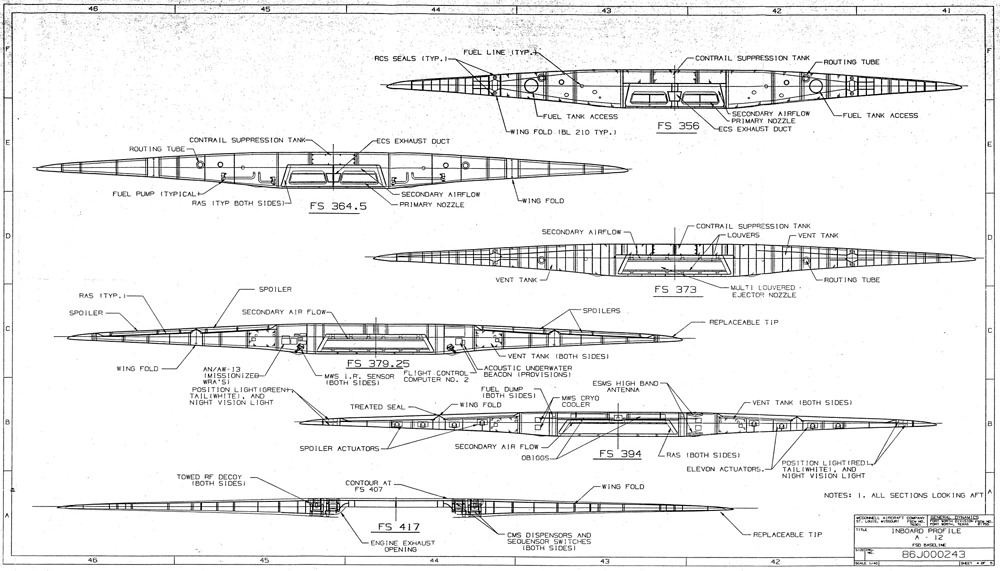- Yes
- No
History
Since its introduction in 1963, the Grumman A-6 Intruder was one of the most important asset of the United States Naval Aviation. Though being slow and sluggish, its massive weapon load capability and long combat radius was unmatchable by any other aircraft.
However, technological advances gradually rendered the A-6 obsolete, and it was predicted to be retired before the end of the 20th century. Consequently, the U.S. Navy initiated the Advanced Tactical Aircraft program in 1983 to develop a successor to the A-6. Two teams consists of five company―McDonnell Douglas/General Dynamics and Northrop/Grumman/Vought―was awarded a concept development contract.
On 13 January 1988, the McDonnell Douglas/General Dynamics team was chosen and the ATA aircraft was designated A-12 Avenger II, named after Grumman TBF Avenger.
The future of the A-12 looked bright. Originally the U.S. Navy and the U.S. Marine Corps planned to purchase 620 and 238 aircraft, respectively, and the U.S. Air Force also considered acquiring 400 aircraft to replace the F-111. It was also proposed as a replacement for the Royal Air Force’s Panavia Tornado.
However, problems began to arise after couple years. The most significant issue was the composite material slated for the A-12, which caused severe engineering problems that increased the aircraft’s weight by 30%. Avionics development are also delayed, so the first flight originally scheduled for December 1990 never happened. The development cost was going to exceed by $1 billion, and it became clear the aircraft would be far too late to replace the A-6.
In this bleak situation, the U.S. Navy and ATA contractors also failed to persuade the government, and the A-12 program was canceled on 7 January, 1991. After the cancellation of the A-12 program, the U.S. Navy sought to develop the A/F-X to replace both the F-14 and A-6, but the project was also canceled in 1993 following the end of the Cold War.
Overall, A-12 was a total failure. But the numerous problems encountered during the project served as a cautionary tale for aircraft development. Moreover, some of the technologies used in the A-12’s development survived and were applied to other aircraft like the F/A-18E/F, meaning its legacy still lives on today.
Paper? Unfinished Prototype?
Currently, paper/fictional vehicles are not accepted as valid suggestions, but unfinished prototypes are permitted. In case of the A-12, it can be considered the latter.
Although no A-12s ever completed, there were some serious efforts regarding the final assembly. According to the GAO/NSIAD-91-261, A-12 contractors manufactured a sufficient number of some parts to meet the requirements for the first 14 aircraft.
And right before the termination of the ATA program, the progress of the first A-12 structure assembly were 10% and 35% for General Dynamics and McDonnell Douglas, respectively. As seen on photos, some components of the airframe were actually manufactured.

Additionally, there is an evidence supporting that at least some of the F412 engine’s compressor core assets were built.


Finally, several avionics specifically designed for the A-12 were confirmed to have been actually built. At least single AN/APQ-183 radar was built by Westinghouse, and AN/AAR-53 Combined Function FLIR is currently on display at the National Electronics Museum in Maryland, USA.
So in a nutshell:
- General Dynamics and McDonnell Douglas did manufactured a specific parts for the A-12.
- Photographs confirm that the some of the A-12’s airframe subassemblies were actually manufactured.
- Some assets of the A-12’s F412 engine core were also manufactured.
- There were Radar and FLIR systems developed and manufactured exclusively for the A-12.
Design
Airframe, Engine
The A-12 is undoubtedly one of the most uniquely shaped attack aircraft in aviation history. Compared to numerous other flying wings, the A-12 possesses an exceptionally simple appearance that looks as nothing more than an isosceles triangle from above.
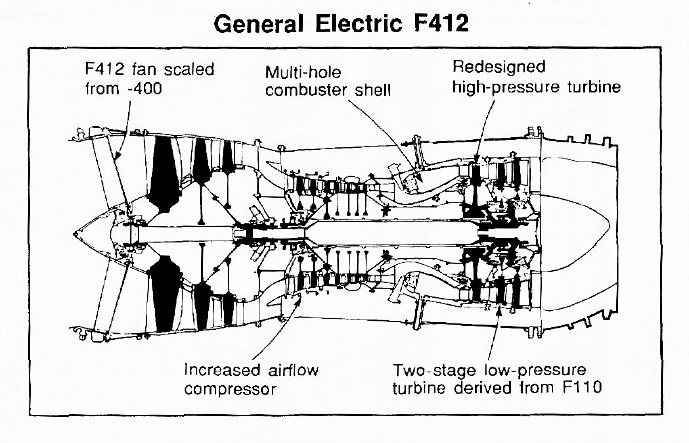
The A-12 was planned to use the F412-GE-D5F2 engine, a variant of the F404 engine. The F412 features an enlarged fan, originally used on the F404-GE-400, and incorporates a two-stage low-pressure turbine derived from the F110. It lacks an afterburner and is specialized for transonic cruise through a larger fan and higher bypass ratio. Later the core of F412 become basis for the F414 engine, a powerplant for the F/A-18E/F Super Hornet.
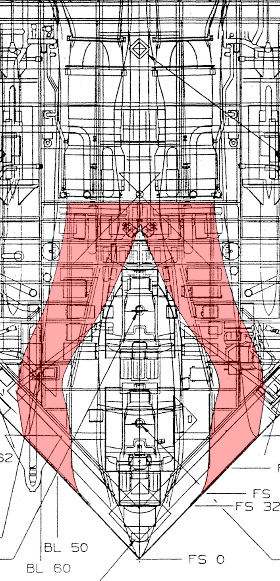

The air intake utilizes a S-ducts to prevent the engine fan blades from being visible from the front, and the exhaust nozzle is also uniquely designed to reduce infrared signatures.
Avionics
A-12 was to be equipped with advanced electronics. Most of these sensors are well-embedded within the fuselage to avoid compromising stealth performance.

The AN/APQ-183 is an J-band multi-mode electronically scanned radar developed exclusively for the A-12, mounted on the leading edges of both wings. Its current whereabouts are unknown, but it was actually built by Westinghouse and delivered on August 29, 1990.

The AN/AAR-53 Combined Function FLIR (CFF) is an optical system dedicated to the A-12, combining FLIR and IRST into a single unit. It is consisted of WRA-1 Sensor Head, WRA-2 Head Control, WRA-3 Head Video and WRA-4 Digital Processor. The CFF was to be installed in the place right next to the radar.



There were also a missile approach warning system, consisted of six distributed sensors to provide full spherical coverage.
Armament, Countermeasures
The A-12 had four internal weapon bays. The outboard bays are for air-to-air missiles like AIM-9 or AIM-120 AMRAAM, and inboard bays are for air-to-ground weapons. The internal weapon bays are extremely large, capable of carrying ten 1,000-pound bombs or four 2,000-pound bombs.

It also has sufficient space to carry two Harpoon missiles and two HARM missiles each.


The A-12 was planned to carry four countermeasure dispensers on its underside. Considering that U.S. Navy aircraft uses the AN/ALE-39 or AN/ALE-47 dispensers, it can be inferred that it would carry a maximum of 120 small-caliber countermeasures.
Specifications
Crew: 2 (pilot, WSO)
Length: 37 ft 3.08 in (11.36 m)
Height: 11 ft 5.28 in (3.47 m)
Wingspan: 70 ft 3.21 in (21.42 m)
Wing area: 1,317 ft² (122.35 m²)
Aspect Ratio: 3.8
Weights:
- Empty: 39,000 lb (17,610 kg)
- Maximum takeoff: 80,000 lb (36,287 kg)
Fuel: 21,322 lb (9,671 kg)
Powerplant: 2× F412-GE-D5F2
- Thrust: 13,000 lbf (57.83 kN)
Performances:
- Maximum speed: 504 kt (933 km/h)
- Ceiling: 40,000 ft (12.19 km)
Armaments: (note: the listed armament is most likely incomplete)
- Hardpoints: 8 total (6 internal, 2 external)
- Air-to-air missiles:
- 2× AIM-9L/M Sidewinder
- 2× AIM-120 AMRAAM
- Air-to-surface missiles:
- 4× AGM-84 Harpoon
- 4× AGM-88 HARM
- Unguided bombs:
- 10× Mk 83
- 4× Mk 84
Avionics:
- Radar: AN/APQ-183
- Band: J
- RWR: Yes
- IRST: AN/AAR-53 CFF
- TGP: AN/AAR-53 CFF
- MAW: Yes
Countermeasures: 4× dispensers
Sources
- A-12 Avenger II - Fort Worth Aviation Museum
- Air Force Magazine November 1990
- American Attack Aircraft Since 1926 by E.R. Johnson
- F/A-18E/F Aircraft Engine (F414-GE-400) Design and Development Methodology from RTO-MP-8 Design Principles and Methods for Aircraft Gas Turbine Engine
- GE Discloses F412 Configuration Details from Flight International 17-23 April, 1991
- GAO/NSIAD-91-291 Naval Aviation: Status of Navy A-12 Contract and Material at Termination
- Jane’s All the World’s Aircraft 1992-1993
- The Avenger that Couldn’t Avenge by Norman Polmar, from Naval History Volume 32, Number 1, February 2018
- The 5 Billion Dollar Misunderstanding: The Collapse of the Navy’s A-12 Stealth Bomber Program by James P. Stevenson

